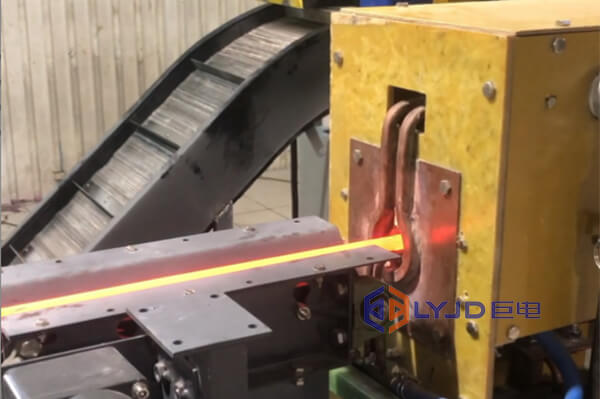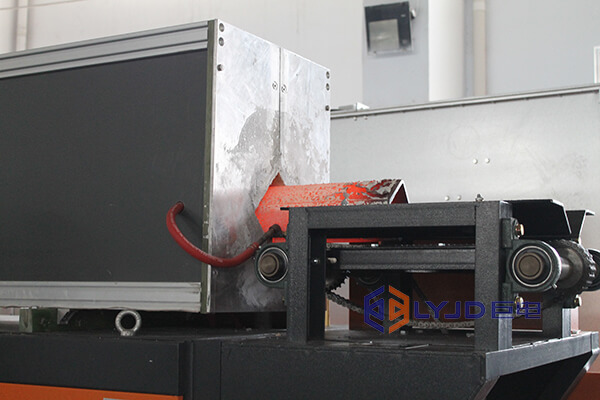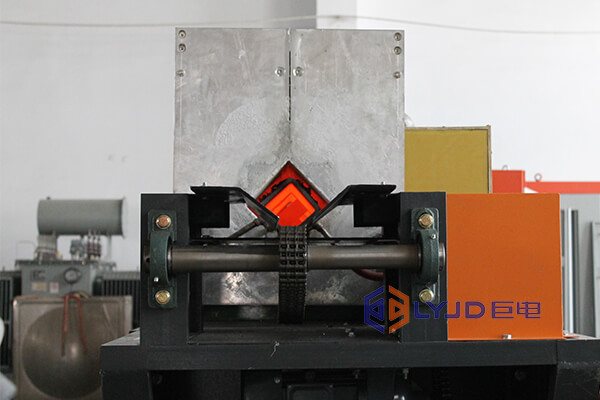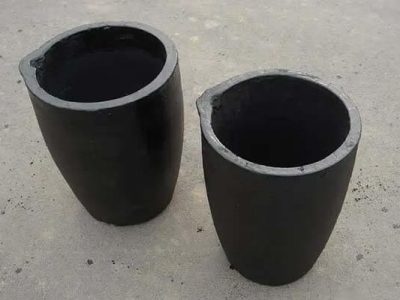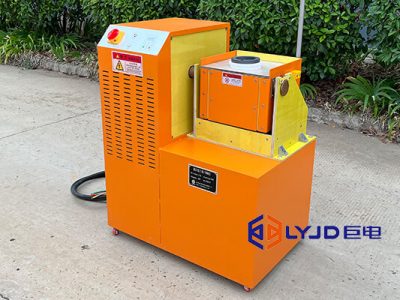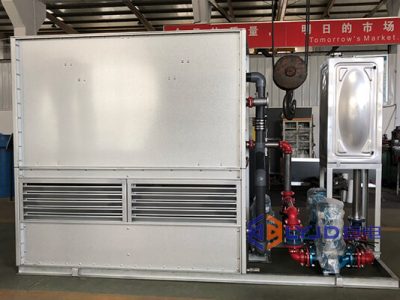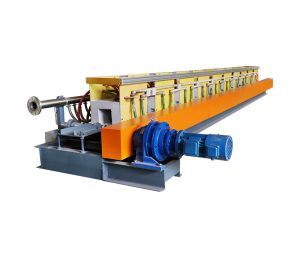Typically, we need to heat the billets to a certain temperature before feeding them to the steel rolling machine. The induction billet heater is the most common machine to do that. While how does an induction billet heater work, and what factors will affect the heating process? In this article, we will tell you something.
Induction Billet Heater Work Principle
The working principle of induction billet heater is mainly based on the principle of electromagnetic induction. When alternating current passes through the coil, a changing magnetic field is generated around it. This magnetic field will induce an induction effect on the metal billet, causing an induced current inside the billet. Due to the resistive effect of the steel billet, these induced currents generate heat, causing the billet to rapidly heat to the required temperature.
In practical applications, induction heating furnaces are usually equipped with an inductor, that is, an induction coil. When alternating current is input, the induction coil will generate an alternating magnetic field. This magnetic field creates eddy currents in the metal billet that are exposed to the magnetic field, with the direction of the current being opposite to that in the induction coil. Because the current in a metal conductor generates heat when it overcomes its resistance, heat is generated and the temperature of the metal rises.
The advantage of this heating method is that the heating speed is fast, which can greatly reduce energy waste and improve production efficiency. However, induction heating furnaces also have their limitations. For example, for different types of metals, the parameters of the inductor need to be adjusted to obtain the best heating effect. In addition, due to its high efficiency and rapid heating characteristics, it also requires high professional knowledge and skills of operators.
How to Determine the Heating Time?
Determining the heating time of the billet is an important step that affects the rolling process and the quality of the final product. A combination of empirical methods and theoretical calculations usually determines the heating time.
The empirical method is to summarize the appropriate heating time through observation and experiment according to the characteristics of different steel types and specifications. For example, for bar and wire billets, the empirical formula can be used:
T = C*b*t
where t is the heating time, C is the thickness of the billet, and b is the coefficient. The coefficient range of low carbon steel is 0.10~0.15, medium carbon steel and high carbon steel. The range is 0.15~0.3.
The theoretical calculation method is based on the principle of heat transfer and calculates the heating time by establishing a mathematical model. This method needs to consider factors such as the size, material, heating temperature, and heating speed of the billet. Through theoretical calculations, the heating time can be determined more accurately, and the efficiency of the rolling process can be optimized.
Factors Affecting Billet Heating Time
The heating time of steel billets is a complex issue that requires comprehensive consideration of multiple factors. By in-depth understanding of the relationship between these factors, combined with actual production conditions and requirements, the optimal heating time can be determined more accurately, thereby optimizing the rolling process and obtaining high-quality products.
Steel Type
Different types of steel have different heating characteristics due to differences in their chemical composition, microstructure, and thermal conductivity. For example, stainless steel has poor thermal conductivity due to its high content of chromium and nickel, so it requires a longer heating time to ensure even heat penetration. Due to its high carbon content, high-carbon steel has relatively poor thermal conductivity and requires a longer heating time.
Billet Shape and Size
The shape and size of the billet have a significant impact on its heating time. Generally speaking, thicker and longer billets require longer heating because the heat takes longer to penetrate the entire billet. In addition, complex shapes may generate thermal stress during heating, thus requiring adjustments to the heating strategy.
Heating Methods
Different heating methods (such as electric induction heating, gas heating, laser heating, etc.) have different heating rates and efficiencies. Electric induction heating is characterized by fast and uniform heating, while gas heating may be more suitable for large-scale production. Each method has its pros and cons, and choosing the right heating method can affect heating time and energy consumption.
Furnace Structure
The design of the furnace (such as furnace size, furnace atmosphere control, type of heat exchanger, etc.) has an important impact on the heating rate and uniformity of the billet. Large furnaces often require longer heating times, and advanced furnace atmosphere control can promote even heating of the billet and prevent oxidation.
Oven Temperature
Oven temperature is a key factor in determining heating time. High temperatures can speed up the heating rate of the steel billet. Still, too high a temperature may cause overheating of the steel billet or cause inhomogeneity of the metal structure. Therefore, precise control of furnace temperature is crucial to obtain high-quality rolled billets.
Rolling Process Requirements
Different rolling process requirements have specific requirements for the heating time of the steel billet. For example, some rolling mills may require continuous, stable billet temperatures to ensure rolling stability and product quality. In this case, additional heating time may be required to achieve the desired temperature and uniformity.
Production Efficiency and Energy Consumption
When determining the heating time, factors such as production efficiency and energy consumption also need to be considered. Heating times that are too long may reduce production efficiency. On the other hand, heating times that are too short may cause energy waste or product quality issues. Therefore, a balance point needs to be found between production efficiency and energy consumption.
In Short
The induction billet heater is an efficient and energy-saving heating method. In practical applications, it needs to be operated according to specific production conditions and requirements to obtain the best heating effect.
























